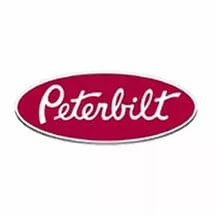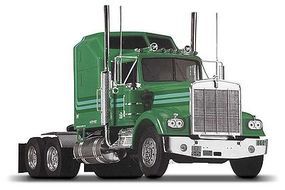
PETERBILT Truck Manuals PDF & Wiring Diagram

History of Peterbilt Trucks
There are a lot of PETERBILT Truck Parts Catalogue, Operator's Manuals & Service Manuals PDF above this page - 210, 220, 279, 359, 480, 330, 320, 579, 587; PACCAR MX-13 Engine Fault Codes DTC.
The company is a subsidiary of Paccar.
In 2008, the hybrid powertrain was first used on this brand. It was created and produced by Eaton Corporation.
Without American trucks Peterbilt can not imagine the states. Peterbilt semi-tractor tractors - shining with chrome, are distinguished by an unthinkably powerful engine. Wheelbase "American" six by four, and just a giant sleeper can not leave unattended not only the inhabitants of America.
After the WW1 in the United States, the demand for trucks has increased dramatically. In many respects this is favored by the increase in the network of good roads.
In 1919 Cummins organized a company for the production of diesel engines, which to this day bears his name.
It makes a lot of efforts to popularize the diesel engine and in 1931 he makes several advertising runs across the country on trucks and buses equipped with his engines. As a result, more and more manufacturers prefer diesel engines. At the same time, the growth of the popularity of caravan tractors begins. Trucks everywhere replace horses, except for a few delivery services in major cities.
It can be said that by the beginning of the second quarter of a century, a transport revolution has taken place in America.
In the 1930s, the popularity of trucks continued to grow. And although sales fell, the "Great Depression" affected the production of trucks less than other business sectors. New models were constantly coming to the market, but nevertheless many firms could not avoid bankruptcy, as happened, for example, with the California company "Fajon Motors", which after 17 years of production of heavy trucks and buses went under the hammer in 1932.
The new owners of the company - Vokesha Motors Company and the Central Bank of Auckland - operated it until 1938, and then in April 1939 they sold it to TA Piterman, a timber merchant from Tacoma, Washington.
Pieterman needed trucks to transport logs. Previously, for this purpose, he was rewriting decommissioned army vehicles, but now he decided to do his own production. The new company was named "Piterman Manufacturing Company", and the machines - "Peterbilt" (that is the name of the wooden doors produced by one of the companies owned by Piterman). In the same year, 1939, the first 14 trucks left the factory gate.
At that time Henry Ford collected hundreds of cars a day, did not build as much even a year, concentrating on quality, and not on quantity. This approach very soon gave a positive result.
In the 40s, a rapid increase in sales began. As early as 1940, 82 cars were assembled, in 1941 - 89. And over the next 10 years, more than 2,000 trucks were sold.

The fact that Pieterman owned a plywood factory, reflected on the first trucks: inside the cabin was decorated with plywood. True, later on this idea had to be abandoned.
"The quality and strength were a feature of Peterbilt from the very beginning," said the current general manager of the company, Nick Lanza, at the jubilee celebrations.
"These characteristics remain at the heart of the company's work now." In each truck that we design, test and produce. " Particularly helped "Peterbilt" military order of the state for 225 trucks in 1944.
In 1945, things went even better, and as a result, 324 trucks were sold.
After that, "Peterbilt" had to withstand many blows of fate, the first of which was the death of Pieterman in 1945 from cancer. The owner of the company is the widow of Pieterman, Ida, who soon sells all the plants, leaving the land on which they were built as their property.
The new owners of Peterbilt, seven managers of the company, plan to maintain and develop the company, changing its name, but in 1958 Mrs. Pieterman announced his intention to build a shopping center on his land.
"Peterbilt" faces a dilemma, where to take $ 2 million to build a new plant, and since the company's owners, very old people, did not want to incur a long-term debt in the face of impending old age, a decision was made to set the company up for auction.
In the 1950s, about 2000 machines were produced.
In August 1960, "Peterbilt" moved to a new territory in new buildings and became a branch of the company, which in 1972 became known as Paccar.
At the same time, Peterbilt retained its name, traditions, model range and continued to remain one of Kenworth's main competitors, despite the fact that both companies had one owner.
During the first year, Peterbilt produces more than 800 trucks at the new plant. In the 60's it was produced about 21.000 trucks.
Very soon the plant's capacities are no longer sufficient for the needs of the company, and in 1969 Peterbilt opened a plant in Nashville, Tennessee.
In the 70s, 72,000 trucks were produced. In 1980, the third plant opens, in the Texas city of Denton.
In 1986, production in New York is curtailed, but there remain managers and engineers. In the 80's, about 100,000 trucks of the brand "Peterbilt" came off the assembly line.
Every year, "Peterbilt" has undergone changes, they touched and the logo. It is considered traditional to write it without a rim. There is a legend that Peterman sketched him on a napkin during lunch.
February 16, 1953 - the birth of the third type of trademark. It is now more like the old one, but the inscription has become smoother and has been placed in a red oval badge, which has been the distinguishing feature of the Peterbilt trucks for almost 50 years.
"Piterbilt" owns many innovations in the field of lorries. Here are some of them.
1945 "Peterbilt" began to use aluminum first to reduce the weight of the frame and increase the carrying capacity.
1949 The engine for the hooded tractor is presented in anticipation of the introduction of restrictions on the length of the road train on motorways.
In 1950, the first hooded tractors 280/350 (two- and three-axle tractors) were demonstrated. The cockpit could lean forward, but this procedure was quite lengthy in time. Such machines produced 5 years.
1959 The company introduces a 90-degree tiltable hood that significantly simplifies service.
1965 Creation of the first all-aluminum tiltable hood.
In the early 70's, "Peterbilt" begins to produce trucks for garbage disposal. The first model "SV300" is produced jointly with "Kenworth" in the Canadian city of Montreal.
The model "310th", presented in 1978, broke the record "SV300". In January 1987, the production of garbage trucks was transferred to the Texas city of Denton. Then the production of the "320LCF" model begins.
Until now, the release of "362SOE" continues. The very first "362" was introduced in 1981 and to this day remains popular. There are options with a bed and without it.
In 1986, the long model "Piterbilt-379" replaced the "359th" model, where the aerodynamic design was first used to save fuel. And this truck continues to enjoy steady demand.
Heavy truck "357" can be adapted as a chassis for the installation of a variety of equipment.
In addition to the 379th model, Peterbilt produces the following trucks, including for unusual markets: the universal model 378, visually different from the 379th sports hood made of aluminum, as well as the 330 model -y "with a unique luxury bedroom system.
